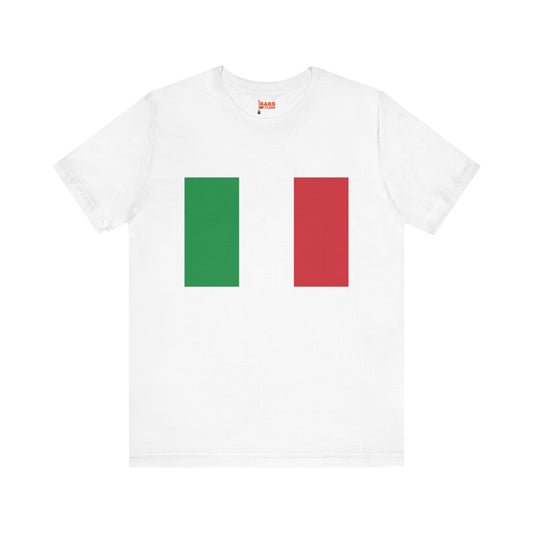-
Italy Flag Sweatshirt
Regular price $34.15 USDRegular priceUnit price / per -
Italy Sweatshirt
Regular price $34.15 USDRegular priceUnit price / per -
Italia Sweatshirt
Regular price $34.15 USDRegular priceUnit price / per -
Italy Pillow
Regular price $22.65 USDRegular priceUnit price / per -
Italy Backpack
Regular price $59.79 USDRegular priceUnit price / per -
Italy Leather Patch Hat
Regular price $18.85 USDRegular priceUnit price / per -
Italy Trucker Cap
Regular price $14.90 USDRegular priceUnit price / per -
Italia Hoodies
Regular price $34.40 USDRegular priceUnit price / per -
Italia T-shirts
Regular price $22.79 USDRegular priceUnit price / per -
Italy Hoodies
Regular price $34.40 USDRegular priceUnit price / per -
Italy T-shirts
Regular price $22.79 USDRegular priceUnit price / per -
Italy Flag on Hoodie
Regular price $34.40 USDRegular priceUnit price / per -
Italy Flag on T-shirt
Regular price $22.79 USDRegular priceUnit price / per -
Italian and Sardinian Historical Flags
Regular price From $43.20 USDRegular priceUnit price / per -
Italy Historical Flags
Regular price From $43.20 USDRegular priceUnit price / per
Collection: Italy
The Italian flag, also known as the flag of Italy, is a symbol of national pride and unity for the Italian people. Its vibrant colors and unique design hold significant historical and symbolic meaning. We will delve into the unusual facts and lesser-known details about the Italian flag, shedding light on its origins, symbolism, and current relevance.
Overview of the Italy Flag's Design and Colors

The Italy flag showcases a simple yet profound design composed of three vertical bands of green, white, and red, each of equal width. Positioned from the hoist side towards the fly side, the sequence starts with a vibrant green, progresses to pure white, and concludes with a bold red. These colors were selected for their deep roots in Italian heritage, echoing the hues of Milan's civic coat of arms. The straightforward geometry of the flag belies the rich narratives of hope, faith, and charity that these colors narrate, embodying the aspirations and virtues of the Italian nation.
This tricolor scheme not only symbolizes the country's scenic beauty and historical struggles but also weaves together its people's ideals and resilience. The flag’s design, devoid of additional symbols or embellishments, focuses on these powerful chromatic representations, making it a timeless emblem of Italy's unity and identity.
Historical Context: From Adoption to Evolution

The journey of the flag of Italy through history is as compelling as the country's storied past. Initially introduced in 1946, post World War II, the flag marked a new era, severing ties with the fascist regime and embracing the Republic of Italy. However, its roots stretch back to the Italian unification in the 19th century. During this tumultuous period, variations of the tricolor design emerged, symbolizing different Italian states' quest for independence and unity.
The flag, as we know it today, mirrors the version adopted in 1948 but retains the essence of designs used by the Cisalpine Republic in 1797, inspired by the French Tricolor, a testament to the influence of the French Revolution on Italian nationalism. This evolution reflects shifts in political power, ideology, and the aspirations of the Italian people, making the flag a dynamic emblem of Italy’s heritage and progress. The iterations of the tricolor design throughout Italy's unification efforts encapsulate the genuine desire for a unified, independent Italy, showcasing the flag's pivotal role in shaping national identity and consciousness.
Symbolism: The Meanings Behind the Colors
The tricolor scheme of the Italian flag is imbued with profound symbolism, each color conveying distinct values and attributes that resonate deeply with the Italian spirit. The vibrant green stripe at the hoist side of the flag stands for Italy's rich, verdant landscapes and agricultural prowess, symbolizing hope and the promise of growth. This color reflects the nation's optimism and forward-looking vision, representing the aspiration towards a prosperous future.
Transitioning to the middle, the white band conveys a message of peace and purity. It underscores the importance of unity and solidarity among the Italian people, reminding them of the country's commitment to harmony within its borders and with its international neighbors. The white color bridges the vibrant green and the bold red, symbolizing the balance and the peace that holds the nation together.
The red stripe completes the flag on the fly side and encapsulates the valor and enduring spirit of the Italian people. It pays homage to the courage displayed in the fight for independence and commemorates the sacrifices made to achieve freedom. The red color stands as a powerful emblem of the bloodshed in the struggle for liberty, reflecting the strength and resilience that have shaped the nation's history and identity. Together, these colors weave a narrative of hope, unity, and bravery, encapsulating the essence of the Italian Republic.
Current Relevance: A Symbol of Pride and Unity
Today, the Italian flag continues to be a powerful emblem of national pride, visibly displayed at a wide array of significant events. The tricolor flag symbolizes unity and identity for Italians everywhere, from the pomp of military parades to the passionate crowds at international soccer matches. Beyond the celebrations and competitive arenas, the flag also plays a crucial role during solemn national memorials. It is a common sight at public demonstrations, where it symbolizes the collective hopes and aspirations of the Italian people.
While its presence in the political landscape has sparked discussions, particularly concerning its appropriation by certain groups, these debates underscore the flag's enduring relevance in Italian society. It remains a versatile symbol, capable of evoking a strong sense of community and belonging among Italians, regardless of the global stage or the internal discourse it may find itself entwined with. Through times of triumph and challenge, the flag of Italy stands as a steadfast reminder of the nation's resilience, history, and ongoing journey toward a unified future.
Additional Facts: Protocols and Anecdotes
In Italy, the flag is treated with the utmost respect and governed by a series of etiquette rules that dictate its proper display and handling. For instance, the flag mustn't contact the ground, a sign of disrespect towards the nation it represents. Additionally, using the Italian flag for commercial ends or as mere decoration breaches traditional codes of respect, reflecting the flag’s sacred status within Italian culture.
Beyond these protocols, the flag carries intriguing stories and references, often affectionately called the "Tricolore" by Italians, emphasizing its three-part design. The influence of the French Tricolor is a testament to the interconnected histories of France and Italy, particularly during the period of Italian unification when the idea of a united Italy began to take a definitive shape. This shared history with France adds a layer of international significance to the flag's design, underlining the broader European context of its origins.
































